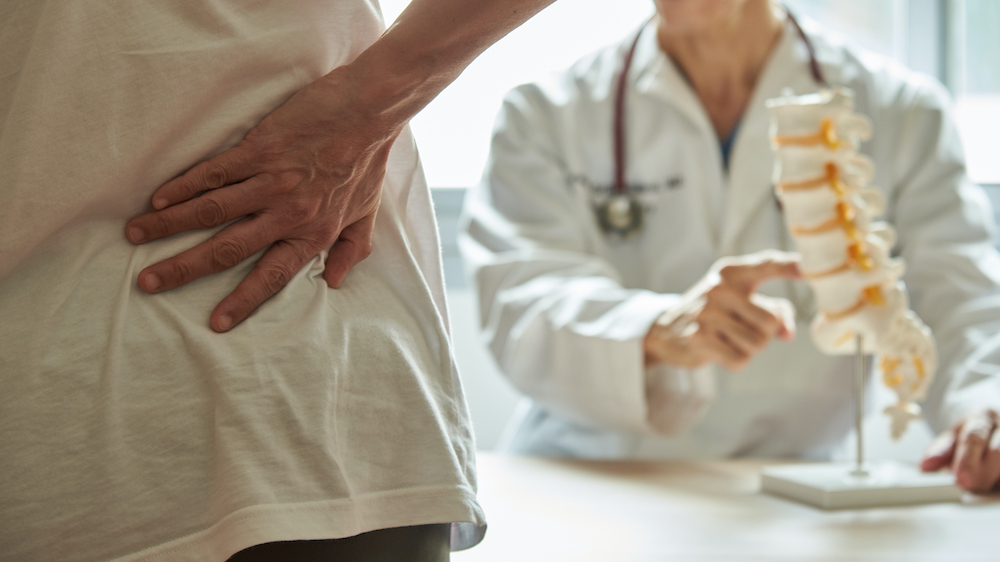Back and Spine Health
The spine is the backbone of the human body. It is made up of bones called vertebrae. These bones are connected by muscles, ligaments, and tendons.
Slipped or bulging disc is a condition that can occur when one of the vertebrae slips out of place or bulges outward.
This can put pressure on the spinal cord and nerves and can cause a lot of pain and discomfort. Though it is said to be most common in people over the age of 40, it can occur at any age.
In this article, we will share with you 3 signs you may have a slipped or bulging disc.
What Are Slipped and Bulging Discs?
The spine is made up of 33 bones, called vertebrae, that are cushioned by spongy discs. These discs act as shock absorbers for the spine and keep the vertebrae in place. The discs have a tough outer layer and a soft, gel-like center.
Over time, the discs can become worn down and may even rupture or break open. This can cause the gel to leak out and press on nearby nerves. This can lead to pain, numbness, or weakness in the arms or legs.
Slipped and bulging discs are two different types of injuries that can occur to the spine. A slipped disc occurs when the inner gelatinous material of the disc ruptures and leaks out, causing the disc to collapse.
A bulging disc occurs when the outer layer of the disc tears, allowing the inner material to protrude.
Both types of injuries can cause pain and other symptoms. Treatment typically involves rest, ice, and pain medication. Surgery may be necessary in some cases.
3 Signs That You Have a Slipped or Bulging Disc

A slipped or bulging disc can be a very painful experience. There are some signs that you can look for that will help you determine if you have a slipped or bulging disc.
1. Pain When Sitting or Standing
Disc pain is one of those things that can be hard to describe. It can feel like an ache, a sharp pain, or even just a general sense of discomfort.
And when it’s in your back, it can be especially difficult to pinpoint the exact location. But there are some telltale signs that you might have a slipped or bulging disc, and one of them is a pain when sitting or standing.
This type of pain is often caused by a herniated disc, which occurs when the inner gel-like substance leaks out through a tear in the outer layer.
And, often caused by repetitive motions or lifting something heavy. Symptoms can vary depending on the location of the herniated disc, but the pain is usually the most common symptom.
2. Pain That Radiates Down Your Leg
A slipped or bulging disc can occur anywhere along your spine, but is most common in the lower back. The pain may be dull and throbbing or sharp and shooting that can also radiate down into your legs.
That’s because lower back discs typically herniate or bulge in the posterior or lateral region, in proximity to your spinal nerve roots.
3. Numbness or Tingling in Your Extremities
If you’re experiencing numbness or tingling in your extremities, it could be a sign of a slipped or bulging disc. This can happen when the discs in your spine become compressed or damaged.
Slipped or bulging discs can cause pain, numbness, and tingling in the affected area.
If you think you may have a slipped or bulging disc, it’s important to see a doctor so they can diagnose and treat the problem.
How To Get Help for a Slipped or Bulging Disc?
If you’re dealing with a slipped or bulging disc, you’re not alone. Most adults will experience this type of pain in their lifetime.
While the pain can be debilitating, there are treatments available to help you find relief.
So, if you’re among the millions of Americans who suffer from a slipped or bulging disc, you may be wondering how to get help. Here are a few options to consider.
Surgery is an option for some people, but it’s not always necessary. If your pain is manageable and you’re able to function relatively normally, you may want to try conservative treatments first performed by expert spine surgeons in Las Vegas, Nevada.
Physical therapy can be very helpful in managing pain and improving mobility. Your therapist will work with you to develop an individualized plan that may include exercises, stretches, and other modalities.
In some cases, injections may be recommended. These can help reduce inflammation and pain and may be done in conjunction with physical therapy.
If you’re struggling with a slipped or bulging disc, it’s better to consult a spine surgeon today so we can help you with the best treatment options available for you.